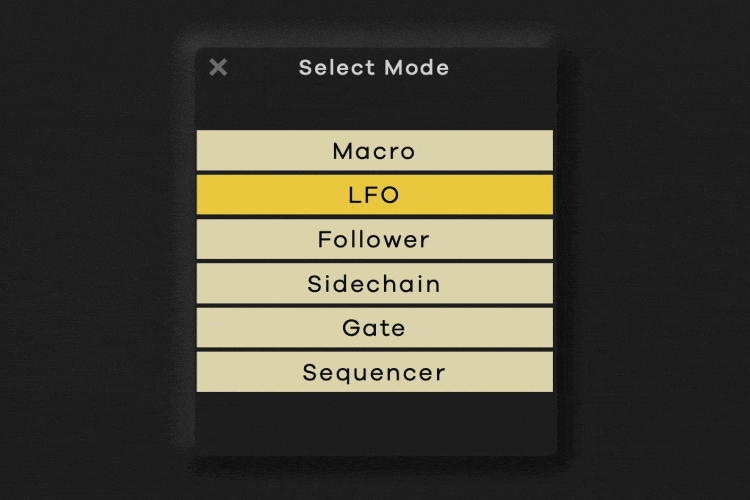Vocoders were one of the first technologies to convincingly emulate the human voice.
Their quirky robotic sound may seem nostalgic now, but they paved the way for the development of voice synthesis as we know it today.
But what exactly is a vocoder? How do they work and how can you capture their iconic sound?
In this article, I’ll explain everything you need to know about vocoders and take a look at the future of voice synthesis technology.
Let’s get started.
What is a vocoder?
Vocoder is short for ‘voice encoder’ and refers to a family of technologies used to emulate the human voice.
Traditional vocoders map the timbral characteristics of speech or singing onto pitched tones from a synthesizer.
Many of the original hardware vocoders came with built-in synthesis features meant to pair with their voice input circuitry.
As a result, classic analog vocoders are often sought after for their unique synth sound as well as their vocoding capabilities.
But while vocoder technology was first developed during the analog era, synthesizing human vocal sounds continued to fascinate engineers through to the present day.
In the DAW era, there are many approaches to voice synthesis and emulation, from traditional analog-style vocoders to timbral resynthesis and even AI.
How does a vocoder work?
Vocoders work by taking voice input from a microphone or recorded track and extracting the characteristics of the speech or singing.
The qualities of the vocal signal become the modulation source for a synthesizer oscillator.
This works by passing the voice signal through a network of narrow bandpass filters, and measuring the intensity of each frequency component over time with an envelope follower.
Those envelope characteristics are used to modulate an equivalent set of filters that act on a synth oscillator, called the carrier signal.
The more filter bands used for analysis and reconstruction, the more realistic the vocal sound will be.
Today’s vocoder plugins can achieve highly accurate results, but for many producers, the charm of vintage vocoders comes from their imperfect recreation of the human voice.
By manipulating the modulator signal from the voice input and changing the sound of the carrier synth signal, you can achieve a wide variety of vocal synthesis sounds, from realistic to robotic sci-fi.
But as I mentioned above, voice synthesis has developed considerably since the days of analog vocoding. Today you’ll find plugins like Humanoid that rely on totally different techniques to achieve a similar effect—more on that later.
How to use a vocoder
If you’re not lucky enough to own a classic analog vocoder or a modern hardware device with vocoder capabilities, you’re probably working with a vocoder plugin inside your DAW.
To set that up, you’ll need a microphone input for your voice, a MIDI controller or recorded MIDI part and your vocoder plugin of choice.
The MIDI signal provides the synth section of the vocoder with note on/off information, and the microphone input provides the voice sounds that will become the modulator signal after processing.
Most vocoder plugins allow input from audio tracks as well as MIDI sources, but the configuration will vary depending on the DAW you use.
For example, in Logic Pro, you’ll need to add vocoder plugins as ‘MIDI-Controlled Effects’ in order to send them both audio input and MIDI information.
But even if your DAW supports audio input on regular instrument tracks, you’ll still need to set them up to receive the voice signal.
On most vocoder plugins, the modulator audio is set with the track’s sidechain input. Depending on your host, you may need to create a dedicated output from the voice channel to ensure you don’t hear any dry signal from the modulator source.
The process is similar when using Humanoid in polyphonic mode, but the configuration may depend on the host DAW.
But speaking of Humanoid…
Is Humanoid a vocoder?
Humanoid is our next generation vocal transformer and resynthesis plugin.
But is it a vocoder? Technically no, Humanoid works on a different principle than traditional vocoding.
Even so, many users have found that Humanoid offers a compelling take on the classic vocoder sound with additional flexibility and a unique character all its own.
Humanoid requires an input signal to create its effect, so it’s not comparable to a vocoder with an onboard synth that can produce an oscillator signal with just MIDI notes.
Instead, Humanoid breaks the incoming vocal signal down into its component parts and resynthesizes them using a method that has more in common with wavetable synthesis.
If you’re interested in learning more, head over to our technical deep dive, but here’s the basic idea.
Humanoid’s vocoder-like qualities come from its tuning function. To robotify the voice signal, Humanoid determines the pitch of the incoming notes and maps it to a set scale or incoming MIDI.
At less intense settings, the effect closely resembles that of a vocal tuning plugin pushed too far.
But when controlled with polyphonic MIDI, it turns into a lush, synthetic pad-like tone that’s clearer and more defined than any vocoder.
If you’re looking to explore voice synthesis and vocoding, it’s worth downloading Humanoid’s free trial to get a sense of what it can do!
The next generation of vocal effects
Vocoders played an important role in the history of synthesis.
Capturing the timbral characteristics of speech and singing was a milestone for sound design and had a huge influence on music.
But vocal synthesis technology has come a long way since the early days, and vocoders aren’t the only way to create synthetic vocals.
New approaches like Humanoid’s unique resynthesis can take the vocoder sound further into the modern era of vocal production.
Now that you have the basics, get back to your DAW and try creating some synthetic voices!





